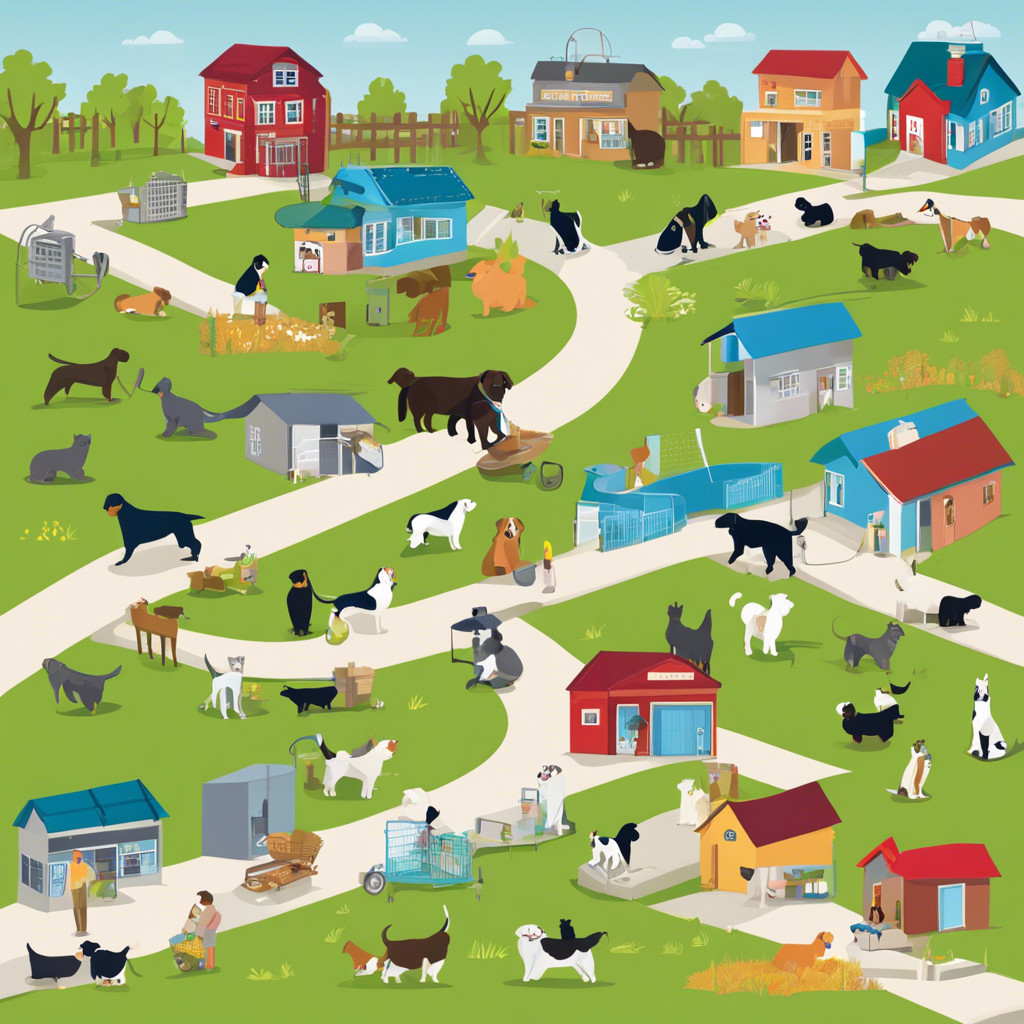A study comparing pet healthcare disparities between rural and urban areas, revealing disparities and offering solutions.
Pet ownership is a joy and a responsibility, but ensuring adequate healthcare for our furry friends can be challenging. A recent comparative study has delved into the disparities in pet healthcare access between urban and rural areas, uncovering fascinating insights. This article will explore the findings, shed light on the challenges faced by pet owners in different environments, and propose potential solutions to bridge the gap in veterinary care.
Understanding the Urban-Rural Divide in Pet Healthcare
Pet owners in rural areas often face unique challenges when it comes to accessing veterinary services. The lack of specialized clinics and the long distances to travel for appointments can significantly impact the health and well-being of their animal companions.
Urban Pet Healthcare Advantages
In contrast, urban areas offer a plethora of veterinary care options, from state-of-the-art hospitals to specialized clinics and 24-hour emergency services. Pet owners in cities have the advantage of proximity, with multiple veterinary practices often located within a short distance. This accessibility enables urban pet owners to promptly address their pets’ medical needs, ensuring timely diagnoses and treatments.
Rural Pet Healthcare Challenges
Limited Resources
However, the situation is markedly different for rural pet owners, who often confront significant barriers to accessing quality veterinary care. One of the primary challenges is the scarcity of veterinary resources. Rural areas typically have a limited number of veterinary practices, and these may be spread over vast distances. Consequently, pet owners in these regions might need to travel long hours just to reach the nearest clinic, which can be challenging, especially during emergencies.
Challenges During Emergencies
In the event of a pet emergency, rural pet owners may face critical delays in receiving veterinary attention. The extended travel times can mean the difference between life and death for their beloved pets. Moreover, the lack of specialized services in rural areas can hinder the diagnosis and treatment of complex medical conditions, forcing rural pet owners to travel to urban centers for specialized care.
The Importance of Telemedicine
Telemedicine has emerged as a valuable tool in veterinary medicine, particularly in rural settings. This technology allows rural pet owners to access veterinary advice and guidance without the need for extensive travel. It can be especially useful for initial consultations, follow-up care, and minor health concerns, reducing the burden on pet owners while ensuring timely interventions.
List of Benefits
Telemedicine offers several advantages, including:
- Remote consultations.
- Minimizing travel.
- Access to specialized care.
By leveraging technology, rural pet owners can receive preliminary assessments and advice, potentially reducing the need for in-person visits for minor issues.
Potential Solutions and Initiatives
Mobile Veterinary Clinics
Implementing mobile veterinary clinics could significantly improve pet healthcare access in rural areas. These clinics, equipped with essential medical supplies and staffed by qualified veterinarians, could travel to remote locations, providing on-site care and reducing the burden on rural pet owners.
Community Partnerships
Collaborations between urban and rural veterinary practices could facilitate the sharing of resources and expertise. Urban practices could offer consultation and training to rural veterinarians, enhancing the latter’s ability to handle complex cases.
Q&A
How can rural areas improve pet healthcare accessibility?
Rural communities can enhance pet healthcare access by advocating for mobile veterinary clinics, leveraging telemedicine, and fostering partnerships with urban veterinary practices for knowledge sharing and support.
What are the unique challenges in rural pet healthcare?
Rural pet owners often face long travel distances to veterinary clinics, limited local resources, and difficulties in accessing specialized care for their pets.
How does this issue impact pet health in rural areas?
These challenges can lead to delayed treatments, making it harder for rural pets to receive timely and comprehensive veterinary care, which can negatively impact their health outcomes.
Conclusion: Bridging the Gap
The rural-urban divide in pet healthcare is a multifaceted issue that requires a comprehensive approach. However, by implementing strategies such as mobile veterinary clinics, embracing telemedicine, and fostering collaborations, we can strive to bridge this gap. It is essential to recognize the unique needs of rural pet owners and work together to ensure that all pets, regardless of their location, receive the best possible care they deserve.
—
External Resources:
1. Pet Care – AVMA
2. Animal Health – USDA
3. Animal Health Social Media Graphics – Canva
